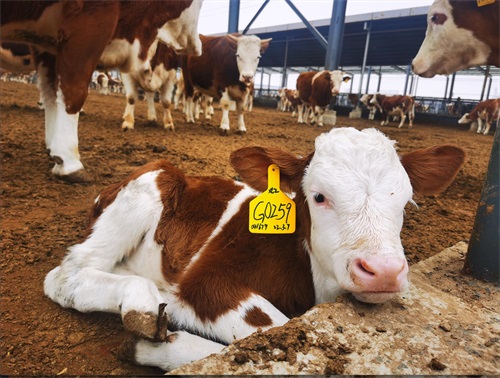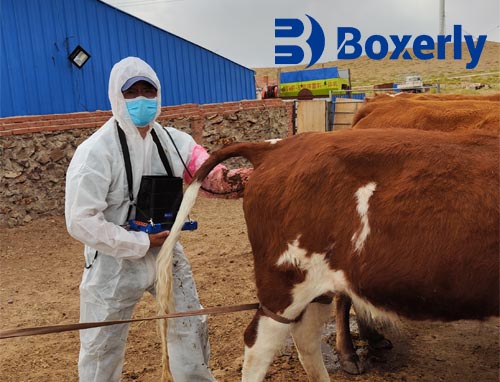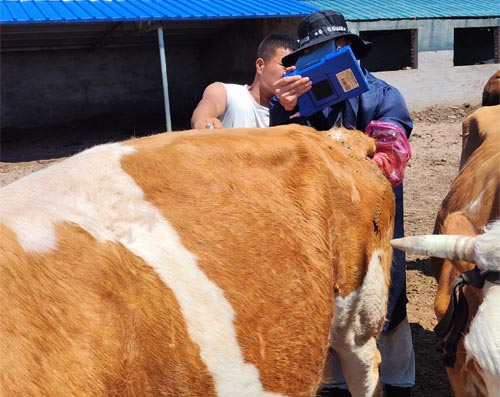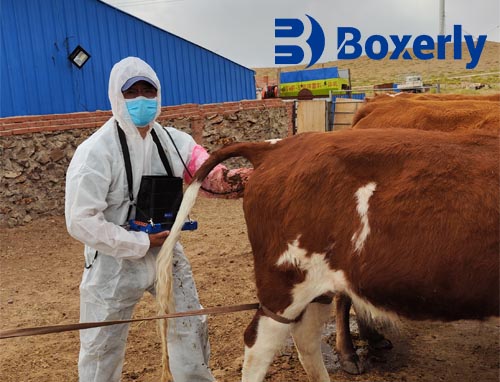Calving season is one of the most stressful times for farmers. Every calf lost is not just an emotional blow but also a financial setback. For small and large farms alike, reducing calving losses can have a huge impact on profitability and herd health. One tool that is changing the way farmers prepare for calving is bovine ultrasound. By giving a clear picture of what’s happening inside the cow, ultrasound helps farmers make better decisions and avoid preventable losses.

Spotting High-Risk Pregnancies Early
Not every pregnancy goes smoothly. Some cows carry oversized calves, some develop complications, and some are carrying twins without the farmer knowing. Traditionally, farmers might only notice issues during labor, when it’s too late to prevent loss. Ultrasound changes this by allowing farmers and vets to detect high-risk pregnancies weeks or even months in advance.
For example, if an ultrasound reveals a large calf or malpositioning, the farmer can plan for extra supervision or arrange veterinary help before calving begins. This proactive approach reduces emergency calls, lowers stress during delivery, and improves calf survival rates. On farms where every calf matters, catching problems early can make all the difference.
Managing Twin Pregnancies
Twin pregnancies in cows are a double-edged sword. While it might sound like a bonus, twins often lead to complications like early calving, retained placentas, or weaker calves. In some cases, twin calves compete for nutrition in the womb, which affects their growth. Farmers who don’t know a cow is carrying twins may be caught off guard at calving time.
Ultrasound gives clarity by identifying twin pregnancies early. This allows farmers to provide better nutrition, plan extra monitoring, and prepare facilities for special care. By being aware, farmers can improve survival rates for both calves and avoid complications that might harm the mother.
Planning for Safer Calving Seasons
For many farmers, calving season means sleepless nights and constant barn checks. While vigilance is necessary, ultrasound helps make the workload more predictable. By scanning cows in the months leading up to calving, farmers know which cows are due sooner, which are high-risk, and which need extra attention.
This planning is particularly helpful for small farms where labor is limited. Knowing when and where to focus energy reduces wasted time and lowers stress. It also prevents cows from going unattended at critical moments. Better scheduling means safer calving seasons, fewer emergencies, and a more efficient use of farm resources.

Economic Benefits of Reducing Calf Loss
Every calf represents value—whether it’s future milk production or beef revenue. Losing calves can quickly add up to thousands of dollars in lost income. By reducing calving losses, ultrasound essentially protects the farm’s bottom line. But the benefits go beyond just saving calves. Fewer complications also mean lower veterinary bills, healthier cows, and less time spent on crisis management.
Here’s a comparison of the economic impact:
| Factor | Without Ultrasound | With Ultrasound |
|---|---|---|
| Calf survival rate | Lower, unexpected losses | Higher, risks managed early |
| Vet costs during calving | Emergency visits, higher bills | Planned interventions, reduced costs |
| Farmer labor hours | Unpredictable, exhausting | Planned, more efficient |
| Profit per calving season | Lower due to calf losses | Higher with more calves weaned |
When calves survive and thrive, the long-term financial impact is significant. For small farms especially, even saving two or three calves a year can cover the cost of ultrasound use.
Supporting Cow Health and Future Fertility
Calving losses don’t just affect the calf—they also impact the cow’s future. Difficult births or retained placentas can harm fertility, making it harder for the cow to breed again. This shortens her productive life and forces farmers to replace cows sooner, which adds more costs.
With ultrasound, farmers can prepare cows for smoother deliveries and reduce post-calving complications. Healthier cows mean better fertility rates, more consistent calving intervals, and longer productive lifespans. Protecting cow health during calving is just as important as saving the calf, and ultrasound makes that possible.

Conclusion: A Tool That Pays for Itself
Bovine ultrasound is not just a diagnostic tool—it’s a safety net for farms during calving season. By spotting high-risk pregnancies, managing twins, planning calving schedules, and protecting cow health, it reduces losses that farmers can’t afford to take lightly. While the initial investment may seem daunting, the long-term benefits far outweigh the costs.
For farmers determined to reduce calving losses, ultrasound isn’t just worth considering—it’s becoming essential. Every calf saved is a step toward greater profitability and peace of mind.
link: https://www.bxlimage.com/nw/1296.html
tags: bovine ultrasound calving losses cow pregnancy risks twin pregnancies in cows herd health management small farm calving reproductive technology in cattle reduce calf mortality







